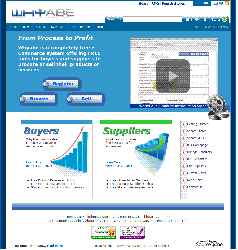When you purchase a product or service that is critical to your supply chain and customized due to unique business requirements, the most important thing you need from a supplier is for them to listen. Yet how many times have you brought a supplier in to discuss a critical aspect of your business, have them nod their head in complete understanding, only to leave and never think about it again?
I spend most of my day explaining business requirements and long term strategies to suppliers, and I would say less than 1 in 5 actually take what I say to heart. The problem is sales people make their living telling people what they want to hear, even if they can’t do what you are asking of them. They want to sell you an easy solution, even when your requirements are complex. Suppliers don’t want to think outside the box, they want business that comes prepackaged, preferably with a ribbon and a card attached.
To quote Peter Griffin, “That really grinds my gears”.
My intent here is not to bash sales people – everybody wants easy business, where the level of engagement required is lunch once a month. Business that operates without a lot of hand holding or up front investment is the best kind. The problem is when you have critical, unique requirements, and suppliers continue to look for the easy sale, simplest solution, or worse yet, promise the world with no idea how they will deliver.
Here are a few ways to make sure that supplier can meet your expectations before you sign on the dotted line:
Ask specific questions. Don’t just ask the supplier “Have you done this before?” Ask them to explain a situation where they have encountered similar issues, and how those issues were resolved. Their response will give you a good indication if the supplier understands the complexities of your requirements.
Prep before presentations. If a supplier is presenting their offering to you, give them a detailed outline of your requirements and ask them to customize their presentation based on your needs. If they still come in with their standard sales pitch, you can rest assured they have no intention of meeting your requirements.
Get specific references. Don’t just ask for references; ask for references with similar requirements. When you interview those references, see how similar they really are. If they don’t match, the likelihood is the supplier still doesn’t understand what you are looking for.
Go up the chain. Talk to the boss/supervisor of your main sales contact. Particularly if your requirements are customized, the boss should be relatively up to speed on your account. If they aren’t, chances are your main contact still isn’t clear what you are looking for, or is hoping they can sell a simpler solution.
Doing this homework won’t prevent you from getting the lip service treatment, but it will help you avoid building a relationship with that supplier.
I spend most of my day explaining business requirements and long term strategies to suppliers, and I would say less than 1 in 5 actually take what I say to heart. The problem is sales people make their living telling people what they want to hear, even if they can’t do what you are asking of them. They want to sell you an easy solution, even when your requirements are complex. Suppliers don’t want to think outside the box, they want business that comes prepackaged, preferably with a ribbon and a card attached.
To quote Peter Griffin, “That really grinds my gears”.
My intent here is not to bash sales people – everybody wants easy business, where the level of engagement required is lunch once a month. Business that operates without a lot of hand holding or up front investment is the best kind. The problem is when you have critical, unique requirements, and suppliers continue to look for the easy sale, simplest solution, or worse yet, promise the world with no idea how they will deliver.
Here are a few ways to make sure that supplier can meet your expectations before you sign on the dotted line:
Ask specific questions. Don’t just ask the supplier “Have you done this before?” Ask them to explain a situation where they have encountered similar issues, and how those issues were resolved. Their response will give you a good indication if the supplier understands the complexities of your requirements.
Prep before presentations. If a supplier is presenting their offering to you, give them a detailed outline of your requirements and ask them to customize their presentation based on your needs. If they still come in with their standard sales pitch, you can rest assured they have no intention of meeting your requirements.
Get specific references. Don’t just ask for references; ask for references with similar requirements. When you interview those references, see how similar they really are. If they don’t match, the likelihood is the supplier still doesn’t understand what you are looking for.
Go up the chain. Talk to the boss/supervisor of your main sales contact. Particularly if your requirements are customized, the boss should be relatively up to speed on your account. If they aren’t, chances are your main contact still isn’t clear what you are looking for, or is hoping they can sell a simpler solution.
Doing this homework won’t prevent you from getting the lip service treatment, but it will help you avoid building a relationship with that supplier.


